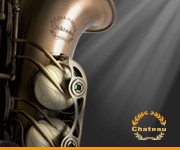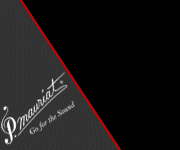Re: PAN-AMERICAN SOPRANO SAX
Hi Angela-
Thanks for posting photos. Your sax is a CG Conn stencil. This means that it was manufactured in the Conn factory in Elkhart, IN most likely in the 1920's-early 1930's.
High pitch saxophones are typically A=457HZ. Low pitch saxophones are typically between A=436HZ to A=440HZ. The difference between these tuning standards is nearly half a step. To understand this difference you need to harken back to high school physics where you learned that sound is energy transmitted through air as pressure oscillations. Since sound behaves like a wave, we can measure it by how often the wave repeats, otherwise known as its frequency (measured in Hertz, which is the same thing as cpi or cycles per second). Today, the universal standard for music is A=440HZ, which means the wave cycles 440 times per second. The higher the pitch the more cycles per second, the lower the pitch, the fewer.
Although we take A=440HZ for granted today, this wasn't always the case. In fact, there was no standard before 1859 when the French adopted A=435HZ. Fortunately, Adolphe Sax had his work shop set up in Paris and didn't really ramp up saxophone production until the mid 1850's so most early saxophones are A=435HZ. Even so, orchestras in other areas of Europe and throughout the rest of the world remained unstandardized. Saxophone manufactures recognized this and accomodated the situation by making instruments in both high and low pitch. To raise the pitch center of a saxophone you shorten the tube and to lower the pitch center you lengthen the tube. Although low pitch was definitely more common, it wasn't until 1939 that an international conference finally established that A above middle C be tuned to 440Hz, now known as concert pitch. But just to keep it interesting, orchestras today will still vary between A=440HZ and A=443HZ.
Cheers,
Mark Overton
www.saxquest.com
Reply To Post
 Forgot Username? Forgot Password?
Forgot Username? Forgot Password?







